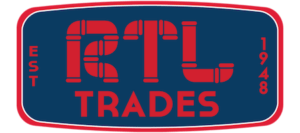Smoke Alarm Installations and Queensland Legislation
RTL Trades install both 240 volt and Lithium Ion battery powered, interconnected, photoelectric smoke alarms, in line with new legislative requirements and Australian Standard 3786-2014. We also carry out annual testign to smoke alarms, as required.
The new implementation of photoelectric interconnected smoke alarms is a 10 year rollout staged approach.
The New QLD Legislation as set out in the Fire and Emergency Service (Domestic Smoke Alarms) Amendment Act 2016 and the Building Fire Safety (Domestic Smoke Alarms) Legislation Amendment Regulation 2016, requires Queensland landlords to take greater responsibility and to ensure that they provide a higher level of safety in rented properties.
The following new requirements are to be in place by 1st January 2022 for rental properties and from 1st January 2027 for all other dwellings.
This ensures the home is compliant with the legislative requirements stipulated by the Queendland Fire and Emergency Services Act 1990; Building Fire Safety Regulation 2008; and the Electrical Safety Act 2002.
Smoke Alarms must:
- Be photoelectric (AS 3786-2014); and
- not also contain an ionisation sensor; and
- be less than 10 years old; and
- operate when tested; and
- be interconnected with every other smoke alarm in the dwelling, so they all activate together; and
- be either hardwired (e.g. 240v) or powered by a non-removable tamper proof 10-year battery.
Smoke alarms must be installed on each storey of the dwelling:
- In each bedroom; and
- in hallways which connect bedrooms and the rest of the dwelling; or
- if there is no hallway, between the bedrooms and other parts of the storey; and
- if there are no bedrooms on a storey, at least one smoke alarm must be installed in the most likely path of travel to exit the dwelling.
In addition to the above, Property Managers/Owners of Rental Properties are currently required to:
- test and clean smoke alarms and replace any flat or nearly flat batteries within the 30 days before the start or the renewal of a tenancy.
- not remove a smoke alarm or battery (other than to replace it), or do anything to reduce the effectiveness of the alarm. e.g. paint it.
Why Choose RTL
- Over 70 Years Experience
- Punctual and Reliable
- Expert Advice
- Fully Licensed and Insured
- Competitive Pricing
- Friendly & Uniformed Technicians
Online Enquiry
[Form id=”1″]What is a photoelectric smoke alarm?
A photoelectric smoke alarm has the capability to detect visible particles of combustion. These types of smoke alarms are generally more effective as they respond quicker to smoldering fires and the dense smoke given off by foam filled furnishings or overheated PVC wiring. Photoelectric smoke alarms are also less likely to false alarm, particularly if located near a kitchen or bathroom.
Why do the smoke alarms need to be interconnected?
When one interconnected smoke alarm is activated, all interconnected some alarms are activated. This early warning increases the time occupants have to escape. The connecting of smoke alarms can be done wirelessly or hardwired.
Power supply options for smoke alarms – battery or hardwired?
A hardwired smoke alarm is connected to a home’s mains power supply, with a battery back-up. These are more reliable in the longer term and if the AC power fails in the night – the battery back-up is there.
9-volt removable batteries are legal until 1st January 2022 for rental properties and dwellings being sold and until 1st January 2027 for owner-occupied residencies (unless the initial building approval required otherwise). All replacement smoke alarms must comply with AS 3786-2014.
When do you need to comply by?
- 1st January 2017: in new dwellings and substantially renovated dwellings
- 1st January 2022: in domestic dwellings leased and sold
- 1st January 2027: in all other domestic dwellings
The testing process
- RTL Trades Electricians take note of the location of the smoke alarms and make a note if any further smoke alarms are required to be installed
- The smoke alarms are cleaned by vacuuming the outside of the alarms
- The back-up batteries (if installed) are replaced
- Any smoke alarms that we test that do not operate we will replaced immediately.
- Any smoke alarms which are dated 10 years after the date of manufacture, will be replaced with a smoke alarm to meet Australian Standard AS 3786-2014.
